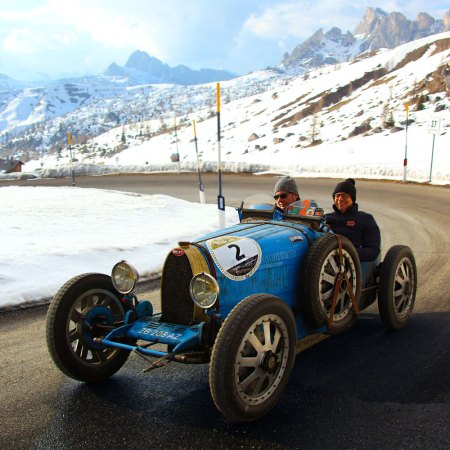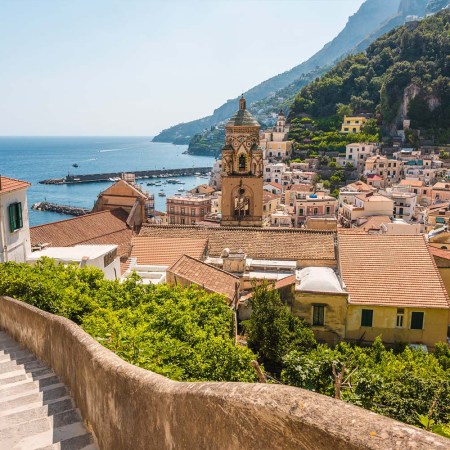The humble Vespa — two wheels, timeless design, playful colorways — was first forged by manufacturer Piaggio as a symbol of upward mobility to help Europeans overcome the massive destruction and depression left behind by WWII. The need for accessible mobility led founder Enrico Piaggio to recruit esteemed designer Corradino D’Ascanio away from his traditional field (aeronautics) to help him build an affordable, easy-to-produce motor vehicle.
Thus, in 1946, the first Vespa was born.
It was cool. It was comfortable. It was affordable. Enclosed bodywork and a tall front splash guard meant riders could wear a suit in transit without dirtying their ankles. It was a revolution; Vespa has maintained its momentum — and a healthy market share among stylish jetsetters — for nearly 70 years since. They’ve sold more than 16 million models worldwide.
And the evolution continues. This Fall, Vespa is partnering with Emporio Armani for the 40th Anniversary of the Giorgio Armani fashion house and the 130th Anniversary of the Piaggio Group on the release of the handsome Vespa 946 Emporio Armani. The stylish scooter will be available in major cities across the globe, including at US retailers in Miami, Dallas, LA, San Francisco, Chicago and their newest retail outlet in Manhattan’s posh Soho neighborhood.
To celebrate, here’s a look at some of the most pivotal moments in Vespa’s history as a beautiful machine and celebrated pop culture icon.
The first prototype, called Paperino (Italian for “Donald Duck”), was built to reach the largest consumer need at the lowest cost. A coveted collector’s item, 1944 and ‘45 Paperino MP5s still command a heavy price at auctions today.
The Vespa Siluro was built for speed. In 1951, test-driver Dino Mazzoncini used the prototype to blow the scooter land-speed record out of the water, with an average speed of 106.3 mph on the Rome-Ostia motorway.
Continuing on its trajectory as a bourgeois status symbol, Vespa becomes a silver-screen mainstay after a triumphant debut in Roman Holiday. It would go on to play gracious host to many a lovely Hollywood lady.
Raquel, Geraldine (tips hat).
The Vespa 150 GS (1955) marked the scooter’s transition to sport. Sporting a more aggressive look, the Vespa no longer represented accessibility: it made you stand out in a crowd.
Grab a friend. Also new in ‘55: Vespa added a sidecar.
In ‘57 — and with moderate success in European markets — Vespa debuted their first car, the Mr. Bean-esque 400.
In the late ‘50s, French Vespa purveyor Ateliers de Construction de Motocycles et Automobiles produced roughly 500 military-issue Vespa 150 TAPs. Meant to be dropped into battle via parachute, each one of these tough guys came equipped with an M20 rifle.
It was the Vespa 50 (1963) that really engaged with the spirit of the youth. Easy to handle and equally easy on the eyes, it became a symbol of mod culture. A breakthrough for Vespa, with more than 3 million built since.
Let us not forget shortly thereafter the ‘67 Vespa 180 Super Sport, specially modified to race, fly, sail and dive for Italian spy film Dick Smart 2007.
Just look at her. The Vespa 90 SS (1970) pushed the limits of originality in design with a smaller leg-shield and a dandy-positive compartment for a spare wheel. Piaggio also later produced the Vespiti, known as the little sister to the 90 SS model.
If it’s pivotal moments we’re talking, let’s fast forward to 2003. Now an international household name, legendary Italian sculptor Mino Trafeli debuted “Mitologica Vespa,” his paean to the Vespa at the Museo Piaggio in Pontedera.
And with that, we leave you with the complete history of Vespa in two minutes. Enjoy.
This article was featured in the InsideHook newsletter. Sign up now.





















